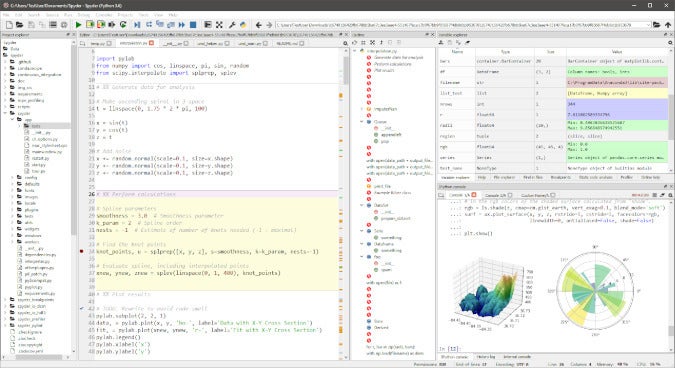

Like highcharter, Leaflet for R is another charting package based on a hugely-popular JavaScript library of the same name. The package has easy-to-customize themes, along with built-in themes like “economist,” “financial times,” and “538,” in case you want to borrow a look for your chart from the pros. It also gives R coders a handy way to access the other popular Highcharts plot types, Highstock (for financial charting) and Highmaps (for schematic maps in web-based projects). It uses a single function, hchart(), to draw plots for all kinds of R object classes, from data frame to dendrogram to phylo. Like its predecessor, highcharter features a powerful API. Highcharter is an R wrapper for Highcharts, an interactive visualization library in JavaScript. Interactive choropleth map ( Joshua Kunst)
POWERFUL IDE FOR R SERIES
Since grid has subsequently been folded into base R, the logic of Lattice should feel familiar to many base R users.įor a deep dive into the differences between using ggplot2 and Lattice, check out this 12-part series over at Learn R.Ĭreated by: Deepayan Sarkar, available in Mode Lattice was built using the grid package for its underlying implementation and it inherited a lot of grid's features. (These tiled plots often end up looking like a garden trellis, as you can see above.) It helps you create tiled panels of plots to compare different values or subgroups of a given variable. Lattice is a system of plotting inspired by Trellis graphics. When you need to visualize multi-variate data, Lattice is your friend. But fans argue that learning to master ggplot2 and (more generally) the tidyverse way of handling data pays huge dividends for any data scientist working in R.Ĭreated by: Hadley Wickham, available in Modeįitted models in panel functions ( Deepayan Sarkar) The drawback of ggplot2 is that it may be slower than base R, and new programmers may find the learning curve to be a bit steep. With ggplot2, you can, for instance, start building your plot with axes, then add points, then a line, a confidence interval, and so on.

Ggplot2 is based on The Grammar of Graphics, a system for understanding graphics as composed of various layers that together create a complete plot. In the words of its creator, ggplot2 “takes care of many of the fiddly details that make plotting a hassle (like drawing legends) as well as providing a powerful model of graphics that makes it easy to produce complex multi-layered graphics.” That's why ggplot2 was born: to make building custom plots easier. While it's relatively easy to create standard plots in R, if you need to make a custom plot, things can get hairy fast. Mode R Notebooks support three libraries on this list - ggplot2, Lattice, and Plotly - and more than 60 others that you can explore on our Notebook support page. To provide one path through the labyrinth, today we’re giving an overview of 9 useful interdisciplinary R data visualization packages. This means there are packages for practically any data visualization task you can imagine, from visualizing cancer genomes to graphing the action of a book.įor new R coders, or anyone looking to hone their R data viz chops, CRAN's repository may seem like an embarrassment of riches-there are so many data viz packages out there, it's hard to know where to start. If you've visited the CRAN repository of R packages lately, you might have noticed that the number of available packages has now topped a dizzying 18,000+.


 0 kommentar(er)
0 kommentar(er)
